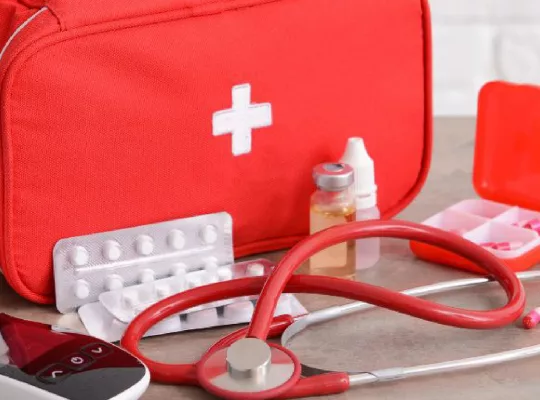With Thanksgiving and the Holidays coming, many people endure minor injuries while preparing food in the kitchen. From burns to cuts, the kitchen holds many opportunities for injuries; however, knowing how to prevent and/or treat the most common kitchen injuries will offer you, family members or loved ones the ability to reduce the likelihood of more serious kitchen injuries. If you do not have a Kitchen First Aid Kit, we strongly suggest you attain one!
Burning Yourself on the Oven
When removing something from the oven or moving something that has recently been removed from the oven are the most common ways people tend to burn themselves in the kitchen. Utilizing a potholder when handling anything that may be hot is key in preventing these burns. Always being aware when the oven door is open and being aware when the oven is on will help prevent burns.
The first and most important thing to do is run the burned area under cool running water for several minutes. This takes a lot of the heat out of the burn and stops it from getting worse. You can also use Burn Care items such as antiseptic creams, burn creams or burn sprays. You can place dry, sterile gauze over the burn. This allows the burn to breathe whilst healing but protects it from germs. Anything worse than a minor burn should be treated with caution and medical advice sought as quickly as possible.
Knife Cuts
Cutting up ingredients for a recipe can be a dangerous endeavor. One slip of the knife and you can find yourself with a minor cut or a much more serious injury. Minor kitchen cuts happen everyday; however to avoid even the minor injuries that can ensue while preparing meals, always
Clean the wound area lightly, carefully wiping away any large contaminants such as dirt or food. If the wound is deep enough to expose flesh under the skin or is numb, it is best to visit a hospital immediately after controlling the bleeding. Apply an antibacterial ointment or solution to the wound area. Any of these disinfectants can work, but rubbing alcohol or hydrogen peroxide may be better for larger wounds because liquid solutions penetrate into the wound more easily.
Apply adhesive bandages to the wound if it is not bleeding profusely. If the wound is larger or somewhat deep, place a sterile gauze pad over the wound and wrap it with gauze somewhat firmly. A larger wound may also require stitches; if you are unsure, see a physician.
Keeping alert in the kitchen and knowing these basic skills will help prevent minor and major injuries for you and your family. Knowing your surroundings and practicing correct procedures is key in staying safe in the kitchen. Accidents do happen; however if you use preventative measures when cooking, kitchen accidents are less likely to happen. Be prepared, have a kitchen/cooking first aid kit ready, accidents happen. For professional kitchens, a Restaurant First Aid Kit is essential, as it contains more advanced wound care supplies and burn treatments to handle frequent kitchen hazards in high-paced environments.
References
http://www.dailyfork.com/2009/03/5_common_cooking_injuries_and.php
How to Treat a Knife Cut | eHow.com How to Treat Accidental Knife Cuts in the Kitchen

